Leaderboard
Popular Content
Showing content with the highest reputation on 06/10/24 in all areas
-
Have you tried this idea Mike, i picked it up from Nicklesilver ages ago, i nicknamed them toothpick condoms , just a toothpick dipped in Evo contact adhesive . Just like doning a rubber, except this one picks things up instead of rejecting them . Not as sticky as a jewel picker but i often use it for that, mostly for picking up floated down bits of debris and hairs. Great for holding down springs as they have loads of grip like a rubber band. Give em a go.3 points
-
I found a 1998 Timex quartz diver digging through a briefcase of $10 (3 for $25) watches on the first Sunday of June (8 days ago) and found this crudy scratched timex that you could barely read the dial. It was missing an end link on the bracelet. I was able to source a new mineral flat and a pair of end links. The dial has a couple of semi circular light scratches hardly noticeable and needs a new crown and polishing of the bracelet and case. But overall I really am taken to this piece. The bezel insert shows some damage. I think the guy who owned this mixed cement a couple of times and then threw the watch into a drawer when the end link pin broke. The hands are immaculate and no water ingress has occurred. Still need a couple of things to do but I like the old scratched bezel offset by the new crystal and almost mint dial and hands. It seems to be running about a second a day or less fast. It's 40mm and 9.7mm thick. 47mm lug to lug. I like that it is not too thick and the reading of time is instantaneous!2 points
-
Hi Dave, Sorry, but You have gone wrong too far here. The banking pins on the photo look wrong as they are too thick and at least one of them is on completelly wrong position. Bending them will not help, may be some filing may open enough free space for the pallet fork, but it has to be done with understanding the interaction fork/ balance and fork/ escape wheel. So You need to learn the escapement action in details. The pallet fork is something that can not be replaced by size. There are too many sizes in it and their combinations are endless number. You need pallet fork from the same calibre, so You need to find out what calibre it is. Then You will need to source a donor movement. Still palet stones adjustment will be needed to accomodate the pallet fork from donor. Thus, it will be much easier to repair the donor than what You have... The other option is to make new staff for the pallet fork, but it needs lathe work and skills2 points
-
Maybe this has been discussed, but why not both. Keep the 404 thread going as is and start the 10.10£ club in a brand new thread! Problem solved for the purists loyal to the 404 and a new cool thread as well!2 points
-
The fellow who showed me this said if anything he preferred the cheapest no-name stuff you find in discount markets. I used to use Continental cement for tubular bike tires as I always had it on hand. Never could tell a difference on the toothpicks.2 points
-
I was thinking that for making sticky sticks, the brand wouldn't really matter.2 points
-
Eyup watch people, a little update on one of the cleaning solutions that i tested a few days ago. The Kerosene ( parafin ) suggested by waggy i used last night to clean up a really grimy greasy movement plate. I did this by hand in a glass jar using a fine nylon brush which within seconds dissolved and dislodged all of the dirt and grease. Next placed the plate on ordinary paper to soak up the majority of the fluid and then blown with a warm hairdryer for one minute. The plate still had a thin oily film on it which i brushed and rinsed off with a small amount of Holts break cleaner spray in a another glass jar and then blown dry for about 30 seconds as the break cleaner evaporated quickly. The result was a completely dry oil and grime free plate , no left over residue or film with very clean looking polished jewels. I'll continue to clean this way for a while and make up some fluid jars with the two solvent to see how machine cleaning pans out. But it's starting to look like a promising cleaning method and very cheap working out at around a quarter of the price of proprietary cleaners. 5 litres of parafin £11.99 from a garage near me, not a cheap garage either and the Holts brake cleaner, cheapest i could find for that on the internet was 2x 5 litre tins for £27 which then had free delivery on the over £25 order. I expect a local motorist supply shop would have 5 litres for 15 quid ish. Thats a total of around £27 for 5 litres of both cleaner and rinse compared to L n R cleaner and rinse from Cousins that would be touching £100 for 3.8 litres of both cleaner and rinse.2 points
-
Most watch companies have effectively banned rodico use, because it leaves a film that oil travels on very easily. It leaves a visually clean surface though.2 points
-
A few years ago, I started out my workbench with a $50 oil kit from ebay with tiny quantities of 9010, HP1300, 8200, 9501, 9415. But the seller was from my own state and known personally by a professional watchmaker I'd taken a starter class with. She doesn't seem to still be selling kits though. This was for me, part of the initial investment and a development phase of "can I do this work, do I have the patience and dexterity." The economics of my quantities received vs the price originally packaged volumes were not really a consideration because I wasn't buying for long term or high throughput (as a pro would need). It was simply a matter of spending $50 on something I was uncertain to succeed at vs spending $150 with no greater guarantee of success. Just adding hobbyist perspective here. And I was fortunate that a professional watchmaker could vouch for my oil repackager.2 points
-
In the Ebay link above, you get 1ml of 9010 for 16 pounds. 2ml, in factory sealed bottle, from Cousins, is 17 pounds. They do have Kluber P125 in small quantities, which is interesting. But a lot of it really is false economy. I think a lot of people just assume that oil is extraordinarily expensive across the board from every supplier- it's often not just more expensive from these re-packagers, it's literally the same price for half or less quantity.2 points
-
Confusing - but Boley.de is not at all the maker of lathes. They are wholesalers like Cousins. Successor of Leinen is Prätecma (Praetecma), not far from Boley.de in Germany. Frank2 points
-
1 point
-
Basically naptha, the propane etc are impurities that will flash off virtually instantly.1 point
-
1 point
-
1 point
-
1 point
-
Yes! Couldn't think of his name. From what I understand he sells the tool posts to anyone, but not sure if he provides a nut for the slot in the slide. His slides have tapped holes that the post screws directly into. I imagine it would be hard to make a universal nut given all the different slides out there.1 point
-
You have a WW style Leinen, which is a good thing! This is the larger width Webster Whitcomb type bed, they also made a model called Reform with the same shape but narrower. It's been my experience that tailstocks for these are completely standardized and one will fit any lathe and line up correctly with the head. This isn't necessarily the case for other makers. A collet holding tailstock is worth looking for, even at the prices they command. The one thing to check is that the locking lever is straight and black, like yours. Earlier Leinens had a slightly different bed dimension, a little larger in width I think?, but those tailstocks won't work. They can be identified by their locking lever, which is bulbous in the middle, and chromed. The tapers in watchmaker lathe tailstocks are a bit all over the place; I haven't found a reliable source of the actual specs for different makers. Do you have the shoe for the slide? This is what fits it to the bed; it slides into the recess in the bottom of the slide. For tool posts, a quick-change is the most useful. Tripan makes an excellent one, at a Swiss price. There is a new maker of high quality watchmaker lathes in China, but they don't have a website- you have to contact them over Instagram. Their handle is watchmakerlathe there. A friend has one of their machines and it's very nice, and their tool post is also very nice and I think less than half the price of Tripan.1 point
-
I find this issue very interesting. I live in the tropics, where relative humidity can be over 90%. I have serviced many cheap, $10 watches with snap on cases with no gaskets and only dust proof crowns. Yet these watches do not fog up or have water ingress damage. I've had a Rado Voyager which would fog up everytime I got caught in the rain. The problem was finally resolved when I replaced the waterproof crown. I suspect that the leaky gasket in the crown allowed water that was trapped under the crown to get sucked in when the watch was removed from the wrist and the air inside the watch case cooled and contracted. No, you cannot create moisture by expanding and contracting air. If it were so, there would be no water problems in the world. Many years ago I was asked to look into a problem that a popular brand of electric toothbrushes was experiencing. The toothbrush body was sealed with double gaskets and the oscillating drive shaft was sealed with flanged shaft seals, like the propeller of a submarine. But many toothbrushes were failing and when each one was opened up, they were filled was water, toothpaste and muck. I dunked the toothbrushes in a tank of water and pressurized them and had no failures. But when the toothbrushes were switched on, dunked in water, pressurized and thermocycled, many of them failed. My conclusion was oscillating shafts toothbrushes will fail. That's why you see many companies producing sonic toothbrushes instead.1 point
-
Hi Rich, All this only confirms that actually the pin lever escapement is not that bad. This is proven by old Roskopf watches and especially when the escape wheel is made of steel. Thow everything seems OK on timegrapher, it will be good to eqalize the depth of both pins. Now there is risk that the escapement will unlock if fork recieves random impulce to the center when balance is rotated away from the zero position. I ned to see a photo of the fork in the movement from above to say which will be the best way to do it.1 point
-
Yes. Most purists would say that you shouldn't cut the head this way, but the number of screws I've seen (on high end pieces) cut this way tells me it's common practice.1 point
-
Interesting. Have you read the MSDS? It's basically hexane, naptha and methanol. If used as described, it's probably safe but don't soak shellac in it.1 point
-
I've been experimenting with MAF (mass airflow) cleaner for hairsprings and pallet forks. For those who aren't familiar with MAF cleaner its for cleaning the very fine wires in the MAF sensor in your engine that measures airflow to determine injector duration etc etc. Claims its safe around plastics and leaves no reside. Just a quick spray in a small bowl and a blow with the puffer in solution to agitate then out and dried. You can literally see the dirt particles coming of the part as you spray it. As yet it has had not effects of the shellac although its only in there for 15 secs. Cleans really well and doesn't leave the hairspring sticking together. Probably contradicting myself here, but I wouldn't try it on a Rolex Regards CJ1 point
-
1 point
-
1 point
-
They would probably (pretty much 100%) be Kif jewels, and probably show issue du dd, not two vertical positions if wrong. Likely they aren't correctly centered, causing interference with the fork in those positions.1 point
-
They have spring loaded tubes, and a triangular cutter inside. The tube fits over the screw, you press and turn and cut a bit of metal out of the head of the screw for poising.1 point
-
When demagnetizing a balance thats not in the movement, I put it in a small jar with some hexane and place that on the demagnetizer. That way the coils won't get damaged.1 point
-
Your general point is well made, but in my case I was talking about the teeny 0.2ml vials, e.g. 9010 for £6.87. This is considerably worse value for money unless this is all you need, in which case it's great! When you multiply by the ~5 different kinds of lubricant you need, it makes a big difference for a beginner. 0.2ml is plenty for a leisurely tinkerer as long as you're careful not to spill it! I made a little stand for the vials by drilling holes in a plastic bottle top. Then I carefully transfer a drop or two from an upright vial to a covered oiling cup using a large oiler as debated in another thread here.1 point
-
I'm not saying for a second that the truly "cheap" watches aren't worthwhile (I have plenty of them too). Hopefully that's not what was conveyed. I just don't want to make it the primary focus any more than making finding a Rolex for $5 the primary focus. Anything anyone finds under the threshold they feel is worth the cup of coffee cost of entry is worth it in my book. I want the name to convey that, and not just "cheap" as that leaves out a big chunk of the fun of it. Cheap, yes, also diamonds in the rough, once in a lifetime finds, watches to learn on, and probably some other angle I'm missing. Something like "I skipped a trip to Starbucks for this!" (which sounds way too much like a clickbait listicle title) that doesn't make any judgements on the watches themselves, simply notes the price paid was low.1 point
-
Yes- and even cheaper straight from the maker (and 30% off on top of that right now, 240 Euro) https://www.toolteam.com/de-DE/kaefer-jka-feintaster-40001-t-766312-4031452400014.html1 point
-
1 point
-
I cleaned the fine springs in my cleaning machine up until one slipped through the mesh parts basket. I managed to find it by sticking a telescoping magnet tool down into each jar. Now, I just clean those separately in a small glass jar.1 point
-
With vintage sets, rust can be an issue or damage from handling or shipping. After derusting the pushers/stumps, there can be pits that remain. Now that I have finished restoring my staking set, I'll turn my attention to my Seitz set. It had some rusting to it when I got it. I have all of the pieces now derusted, cleaned and lightly oiled. Now I need to examine the condition of the pusher tips and see if any need to be dressed.1 point
-
Sorry, hadn't made any progress on that project. Had family issues come up and took time off from watchmaking. Still using my budget machine based on a lab stirrer motor and a lazy susan turntable. I fit the main plate in the tray first and then place (stuff is more like it) the mainspring on top. The tray is tall enough to accommodate both.1 point
-
Here is an evapouration test of 5 solvent type fluids in common use for cleaning watch parts , and for a comparison a proprietary cleaner. The list in order of testing and result is as follows 1. Lighter fluid 2. IPA 3. Methylated spirits 4. Acetone 5. Kerosene 6. Elma ammoniated. This maybe helpful in determining how good their cleaning ability is. The testing was kept fairly strict as far as a diy approach can be. A cupped mirror was used to place a single drop of fluid at it's center and timed until the drop completely evaporated or i ended the test, the mirror was throughly cleaned with IPA and dried between each test. Each picture is in order of the test starting with picture 3. My thoughts and notes are pic 3. The lighter fluid left quite a thick layered stain. 4. IPA was less stained. 5. Meths was very light on staining but left a thin outside ring and droplets at the center that would not evaporate ( possibly contamination in the meths ? ) 6. Acetone was by far the fastest evaporation rate leaving again light staining but a heavier outer ring stain. Pic 7. Kerosene which was interesting, very low evaporation rate but a high wetting nature that climbed the whole of the mirror walls in 6 minutes, even with heat from a hairdryer the kerosene would not evaporate. Pic 8. Elma ammoniated which did not evaporate or move at all for 8 minutes and pic 9. needed extra 5 minutes of heat to dry out completely . Pic 10. Is the mess from the dry Elma fluid when i tried to clean the mirror. Make your own conclusions from these results.1 point
-
When pegging and doing a pre-clean on very dirty movements I always use naphtha. As mentioned above, IPA isn't good solvent for oils and grease.1 point
-
Hi all, I have uploaded a pdf copy of the Generale Ressorts catalogue. So that you can make yourself a hard copy. Handy to have in the drawer. (sometimes!). Even the pdf seems to be hard to find. Cheers Graziano. GeneraleRessorts.pdf1 point
-
I've had good luck with Viola tweezers made in Italy. Quality and finish matches Swiss. Some brass models. Priced around $10 a pair new on flea bay. Think you'll be pleasantly surprised by price and quality.1 point





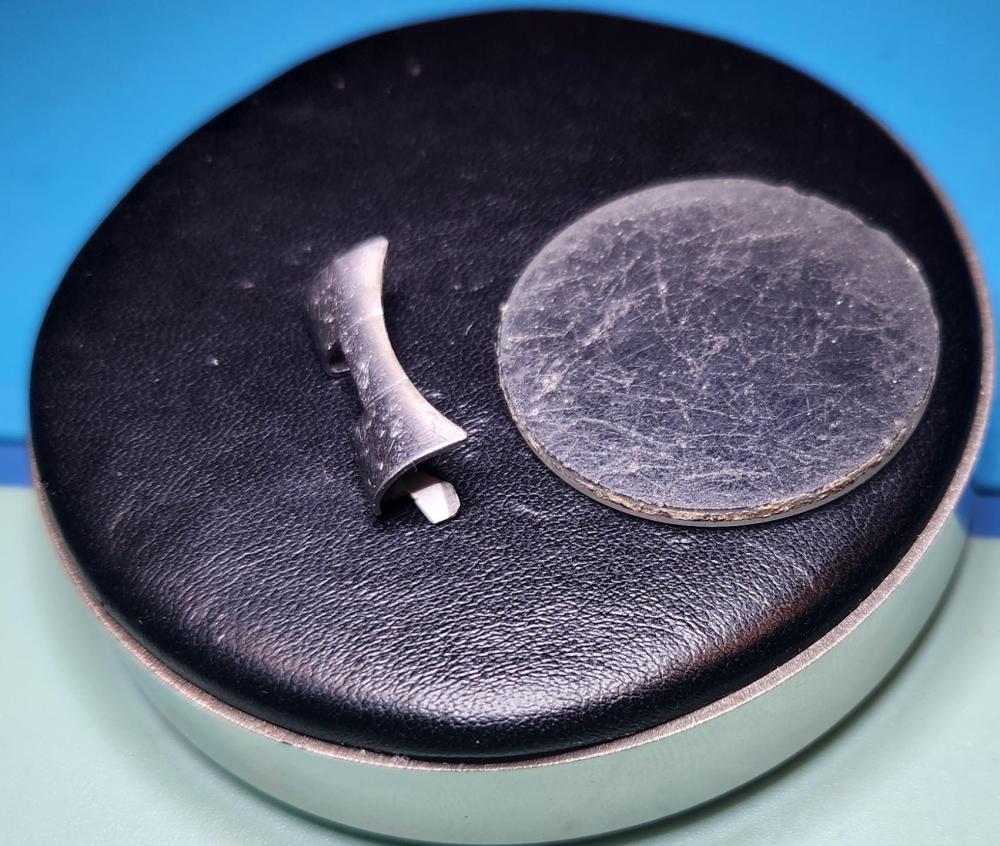
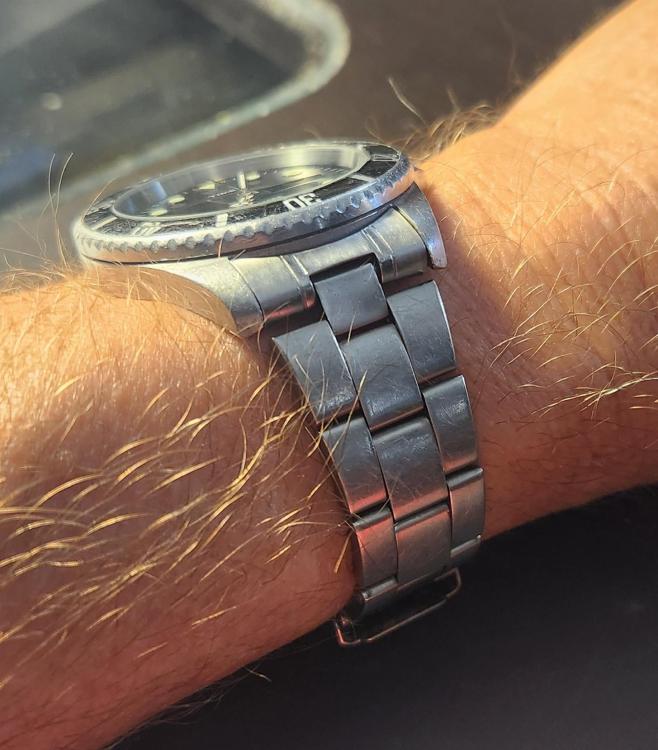


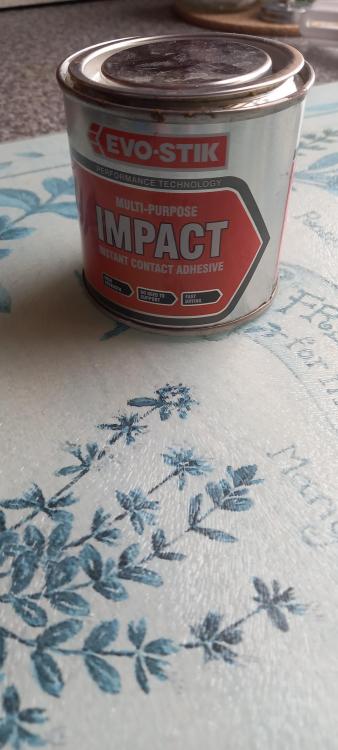
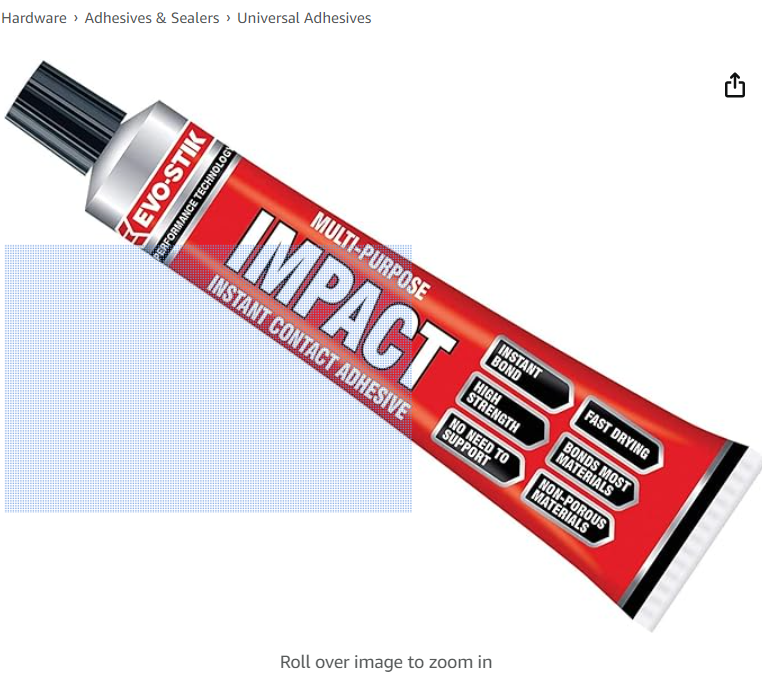





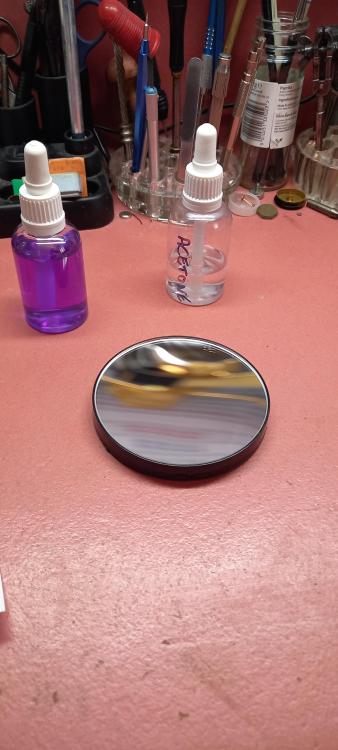
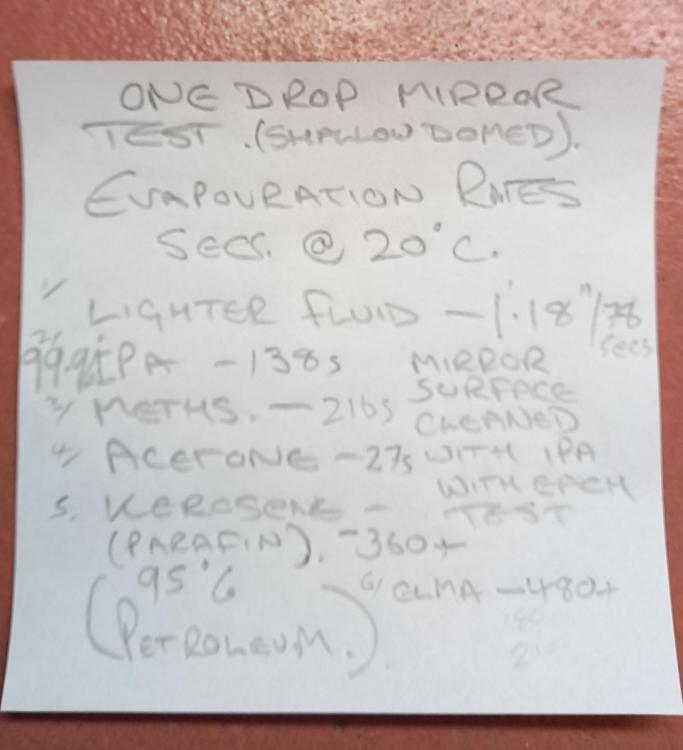
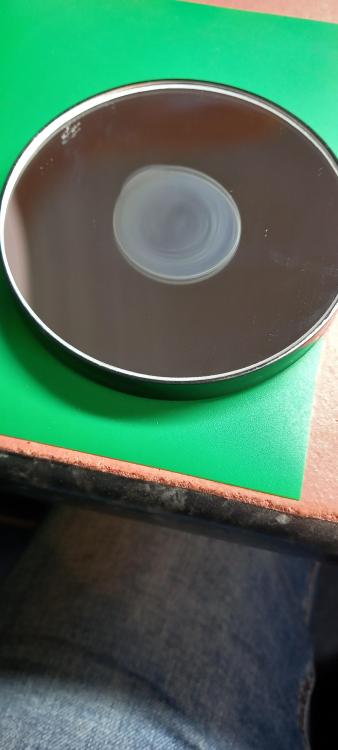
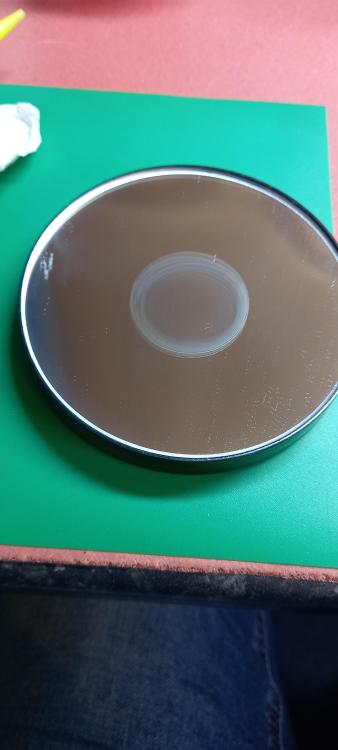

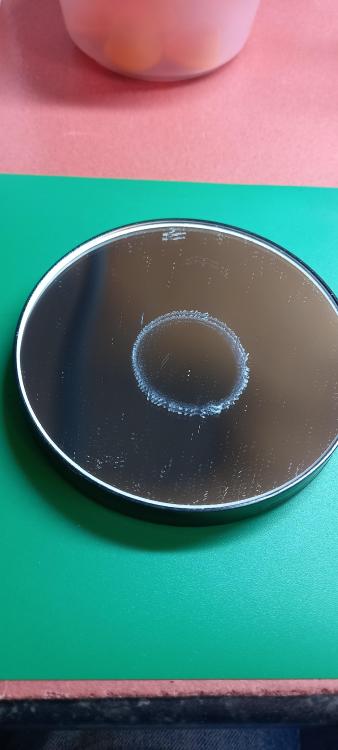
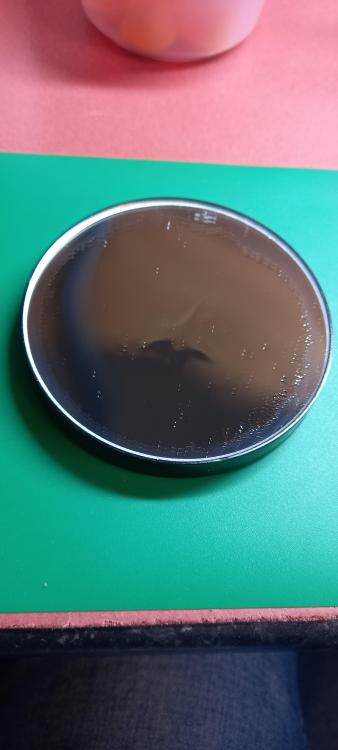
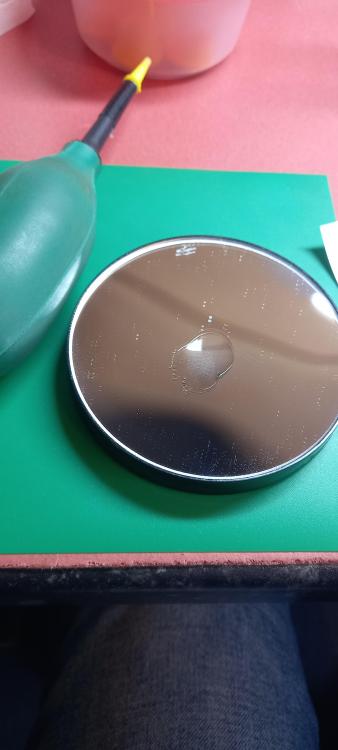
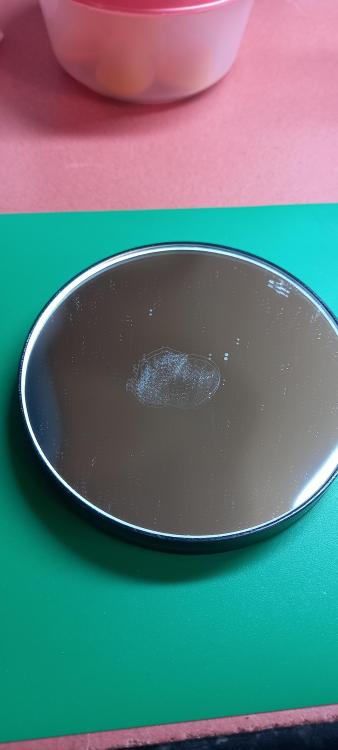
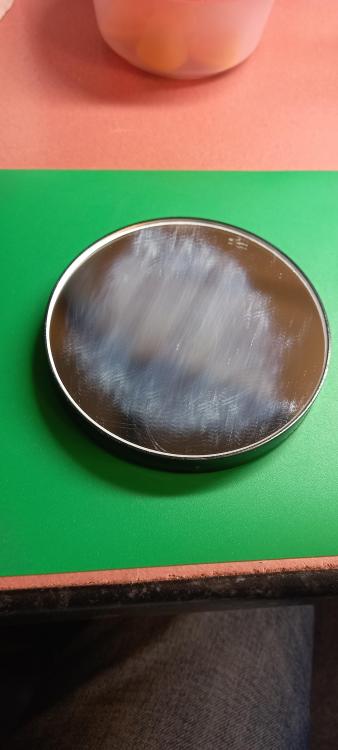

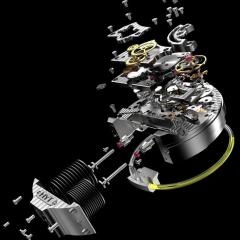
.thumb.jpg.e1737221d1bb91b37331a627546ff250.jpg)